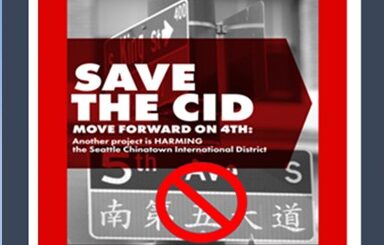The Chinese Exclusion Acts: A Racist Chapter in U.S. Civil Rights History
This year marks the 130th year since the passage of the Chinese Exclusion Act of 1882. It was the first federal law that excluded immigration of a single group of people based on race. Moreover, its passage was the start of eight decades of racist immigration policies towards Asians that began with Chinese exclusion, than Japanese exclusion, and followed by severe restrictions of Filipinos.
The Chinese Exclusion Acts
The 1882 Chinese Exclusion Act prohibited (1) the immigration of Chinese laborers, (2) denied Chinese of naturalization; (3) and required Chinese laborers already legally present in the U.S. who later wish to reenter to obtain “certificates of return.” The later provision was an unprecedented requirement that applied only to Chinese residents. Other
Acts were passed and steps taken by the U. S. to extend the 1882 Chinese Exclusion Act: Scott Act (1888)… prohibited all Chinese laborers who would choose or had chosen to leave the U.S. from reentering. cancelled all previously issued “certificates of return,” which prevented approximately 20,000 Chinese laborers abroad. Geary Act (1892) …extended the Chinese Exclusion Act for 10 years, required all Chinese persons in the U.S. — but no other race — to register with the federal government in order to obtain “certificates of residence.” In 1898, the U.S. annexed Hawaii and took control of the Philippines, and excluded thousands of Chinese in Hawaii and the Philippines from entering the U.S. mainland.
In 1902, Congress indefinitely extended all laws relating and restricting Chinese immigration and residence, and expressly applied such laws to U.S. territories.
Anti-Chinese Era
The passage of the Chinese Exclusions Acts were extremely damaging to the early Chinese immigrants and the plight of Chinese in America. The passage of these Acts was a grave manifestation of anti-Chinese sentiment that began with the arrival of the Chinese in California in the 1850s and eventually spread throughout the American West, intensifying with the increase presence of Chinese. Along with a many state and local anti-Chinese, these federal acts were significant part of a vicious, violent, brutal, systematic campaign of ethnic cleansing that lasted for several decades.
Ironically, the attacks against the Chinese occurred despite the vital role they played in developing the American West. From the time they arrived and over the following three decades, these Chinese immigrants worked as domestic servants, laundrymen, miners, road graders, railroad workers, cannery workers, fishermen, cooks, farmers, and
other occupations that were often shunned by whites. Their work greatly contributed to the establishment of the mining, fishing, railroad, timber and lumber, coal mining and agricultural industries in the West.
Despite their contribution in developing the western frontier, the anti-Chinese sentiment steadily grew and peaked during the 1870s and 1880s. The anti-Chinese era clearly became one of the most ferocious and outrageous display of racism in the history of the American West. Humiliating, berating, harassing, beating and murdering of Chinese
were so commonplace occurrences that newspapers seldom bother to print the stories. Among the hundreds of lynchings in the West, the majority of those lynched were Chinese. By the end of the 1880s, hundreds of towns in the West kicked-out their Chinese – either by angered mobs or legislation.
The anti-Chinese sentiment did not escape Washington state. When the first territorial legislature convened in 1853, it immediately adopted a measure to deny Chinese the right to vote, even though there were few if any Chinese living in the territory. By the mid-1860s, after a small number of Chinese began to appear in the area, Territorial legislators passed additional anti-Chinese laws. One law barred Chinese from testifying against whites in court. Another measure, titled, “An Act to Protect Free White Labor Against Competition with Chinese Coolie Labor and to Discourage the Immigration of Chinese in the Territory,” resulted in a poll tax levied on every Chinese. The violent anti-Chinese outbreaks in Washington reached its height in the mid-1880s with attempts to directly get rid of the Chinese at various worksites and towns in Western Washington including Newcastle, Olympia and Bellingham. Some 700 Chinese in Tacoma were removed from its Chinese quarters, which was also burned to the ground, while some 350 Chinese in Seattle were forcibly removed during this period.
The causes that led to Chinese exclusion centered on racism coupled with economic reasons. That the Chinese as “unfair labor competition” — because they were willing to get paid lower wages and willing to do jobs whites shunned — was a major reason why the dominant white population wanted to exclude them. For sure, this perception was evident when economic conditions were bad and many were out of work. However, there were other reasons America wanted to exclude the Chinese. The perception of Chinese as deceitful, heathers, despotic, cruel, filthy, cowards, and intellectually
inferior was prevalent among American historians, diplomats and traders. And, because of their yellow skins and their different beliefs and culture, the Chinese were seen as inassimilable. Moreover, the Chinese were thought to be unworthy of American citizenship, and even a danger to the political and social integrity of America. The Chinese in America were not only denied basic civil rights and equal protection under the law, they were denied nationalization and basically denied immigration to the U.S. for decades. The consequences of exclusion for the Chinese in America were predictable: The failure to grow in numbers as an ethnic group, minimal growth of Chinese families, illegal Chinese immigration, isolation and segregation into the Chinatowns, greater drugs and crime in Chinatowns, disappearance of Chinatowns, lack of educational and employment opportunities, separation from families and relatives in China.
The Chinese Exclusion Acts were repealed by a 1943 bill sponsored by Washington state Senator Warren Magnuson. The repeal set a quota of 105 Chinese immigrants to the U. S. annually and allowed Chinese in America to become nationalized. But, the repeal bill was passed because of the fear that the Japanese would use the Chinese Exclusion Acts
as propaganda to distance war ally, China, from the U.S. Its passage was not primarily to provide Chinese in America with basic rights nor to improve their plight.
New Chinese Immigration and Anti-Chinese Era
It was not until the passage of the 1965 Immigration Act that Chinese immigrants were allowed to immigrate to the U.S. on a large scale. Under this Act, a limit of 170,000 immigrants from the Eastern Hemisphere were allowed to enter the United States annually with a ceiling of 20,000 from each country. The changes in immigration law led to the arrival of Chinese from the People’s Republic of China, Hong Kong and Taiwan as well as other Southeast Asian countries. Subsequently, Chinese immigration to the U.S. has increased so much that their population in the America has practically doubled every decade since the passage of the 1965 Act. These new immigrants arrived to an America that is much more tolerant of Chinese than that of the anti-Chinese decades, thanks in large part to the civil rights movement in the 1960s that opened up economic and educational opportunities for racial minorities and others. Since the 1970s, there are programs to help immigrants and refugees to adjust to America, to find jobs and create businesses, to further their education, and deal with legal issues.
The relative success of these new Chinese immigrants and relative absence of discrimination towards them, however, has made it difficult for them to relate to the sad and painful anti-Chinese period. For them, as well as other Chinese and Asians, the anti-Chinese era should be learned and remembered as a period when Chinese immigrants were the victims of one of the most racist attacks in American history and the ethnic group that America wanted to totally exclude. Comprehension of the Chinese Exclusion Acts and what brought them about and their impacts, should bring about an appreciation for the hardship and endurance of the early Chinese immigrants. Moreover, it should inspire Chinese and other Asian Americans to continually fight for civil rights and equal treatment for all. In this context, and of immediate concern, is the struggle to ensure the rights of legal and illegal immigrants to this country and the campaign to ensure “Justice for Private Danny Chen.”
by: Doug Chin, President of Greater Seattle OCA
(Note that OCA is one of the groups asking Congress to formally acknowledge and express regret at the passage of the Chinese Exclusion Laws and to reaffirm its commitment to protect the civil rights of all people in the U.S.)







